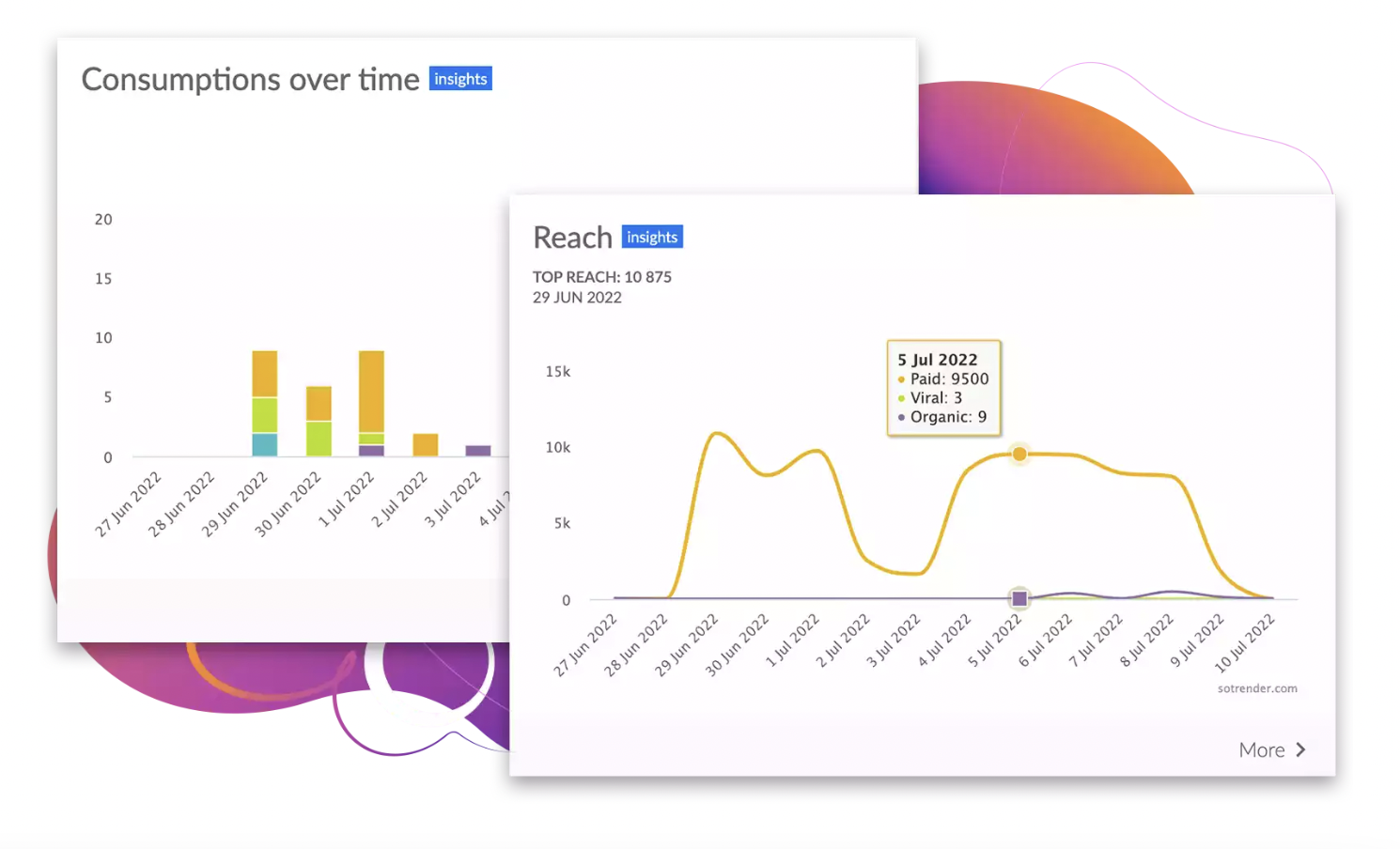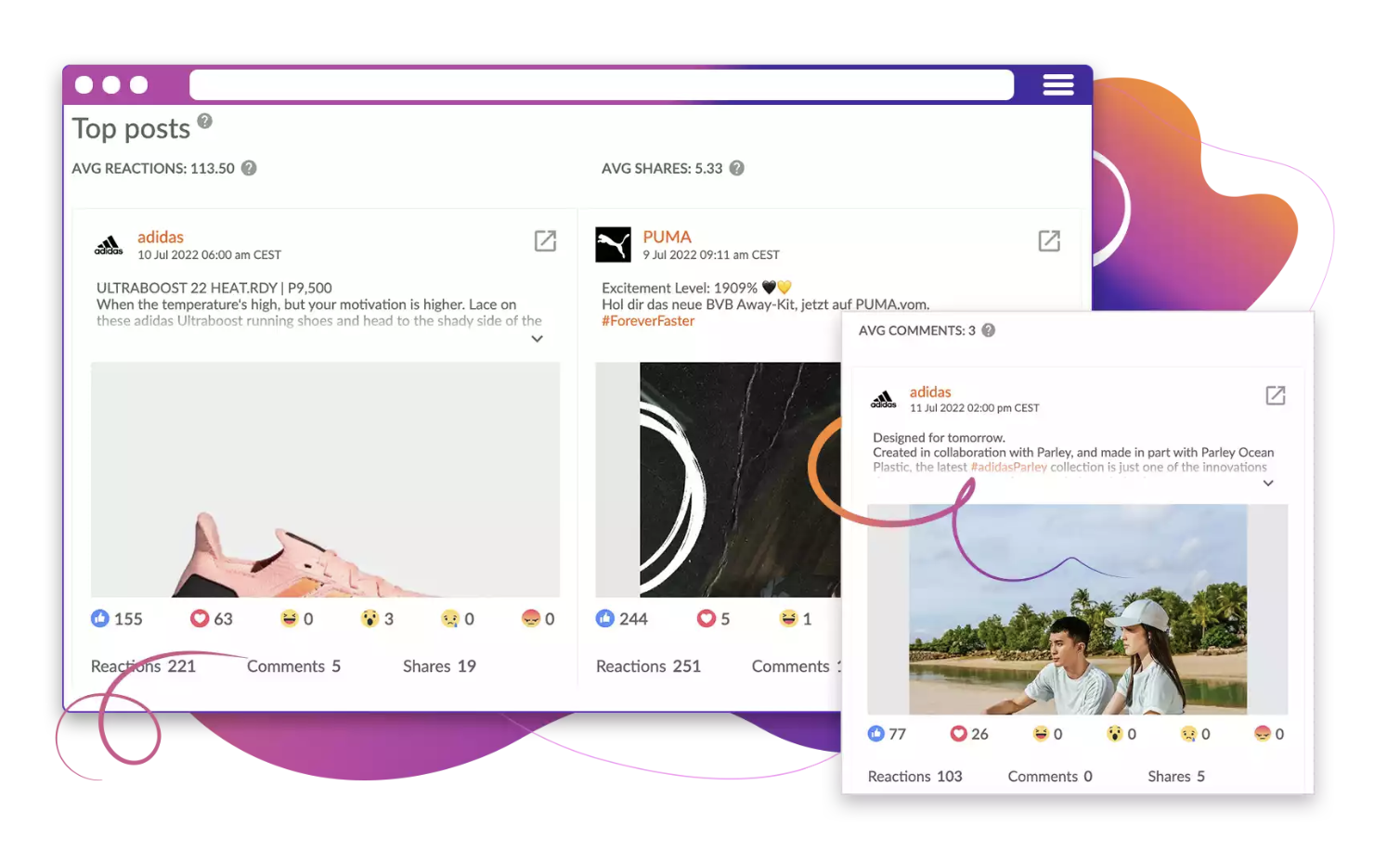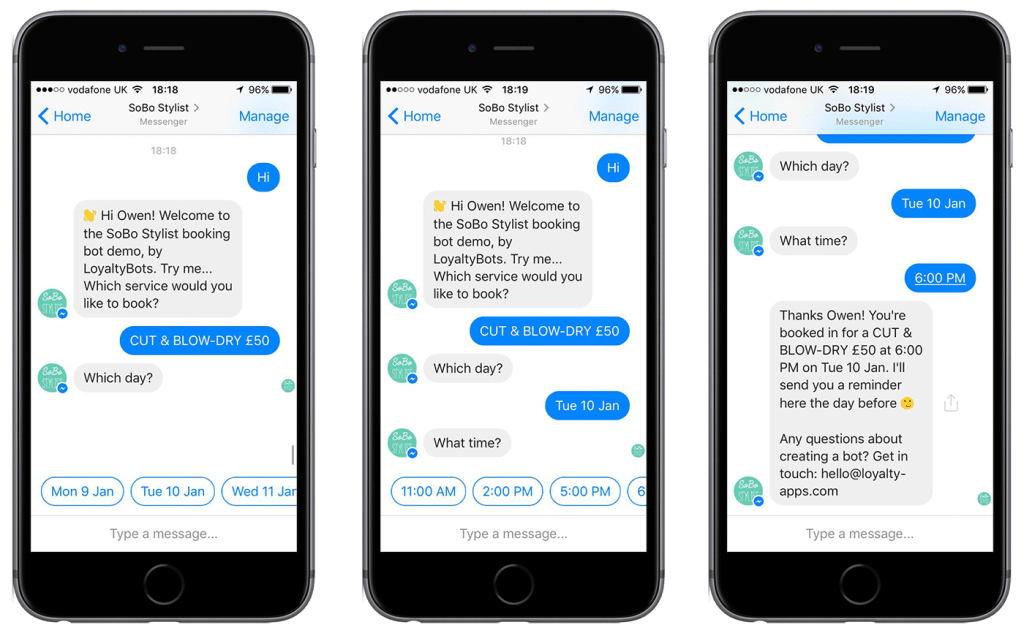Younger generations are quickly drifting from good old Google to social media sites for brand discovery. For these young adults who are all set to enter the business world, social media is the new cool to explore trends and search for products.
According to research, 97% of Gen Z confirm social media is their go-to platform for shopping and inspiration.
TikTok, Facebook, Instagram, YouTube, and LinkedIn are breeding grounds for growth-focused brands. However, there’s no magical formula for easy brand discovery across all channels. That’s when social media management and consistency pay off.
However, handling and monitoring social platforms on your own can be a challenging undertaking. To assist you in this endeavor, we have compiled eight best practices for social media that will position your brand for success.
What is social media management, and why is it important?
Social media management is a strategic process of managing your brand presence to grow online audiences through engagement and generate a consistent stream of revenue.
Here’s what social media management entails:
- Develop tailored strategies to attract and engage targeted audiences.
- Create, schedule, and publish compelling social media posts.
- Build a social strategy calendar for content and schedules.
- Perform social listening to understand and implement the latest trends.
- Monitor customer conversations and interactions across all platforms.
- Create, manage, and monitor social media ads performance.
- Analyze metrics, generate reports, and optimize campaign performance.
So are all these tasks worth the effort? Yes! Let’s understand the importance of social media management with proven statistics:
- The rise in social buyers — 64% of digital buyers discover brands or products via social media, proving that now is the best time to have a social media presence.
- Social media ads have a high click-through rate — Social media ads have a 1.21% average click-through rate (CTR), close to Google ads’ CTR of 1.5%.
- High ROI potential — Instagram takes the lead as the highest revenue-generating platform in 2023, with Facebook being a close second. Targeted advertising, trend analysis, and quality content creation as part of social media management can bring this to fruition.
- Social media is a cost-effective marketing strategy — Creating a social media account, posting regularly, and interacting with customers/followers involves zero costs (literally). To top it off, running social media ads is much cheaper than other paid ads.
Social media management also generates positive brand awareness across all channels — a crucial metric for driving consistent sales.
Start analyzing your social media efforts
8 best practices for social media management
Let’s go over each tried and tested best practice to make the most out of social media management in 2024.
1. Create a documented strategy
Create a well-documented social media strategy by performing a thorough platform audit. Document every nitty-gritty of your social media strategy, such as:
- What social media platform do you intend to use, and for what purposes?
- Which content format will you be using? Is it videos, stories, or user-generated content?
- What would your posting frequency be?
- Who are your direct and indirect competitors on your chosen platforms?
- Do you have a customer support team to handle audience queries?
- Who’s your targeted audience on each platform?
- What are your KPIs? For example, increasing click-through rate, inquiries, post engagements, etc.
These are some of the vital questions your documented social media strategy must have answers to. The more detailed your documentation is, the more aligned your efforts are as you plan to scale.
An audit of your social media management is vital, as it unveils the crucial insights needed to craft an effective strategy, ensuring alignment and maximizing your impact in the digital landscape – adds Milosz Krasinski, Managing Director at Chilli Fruit Web Consulting.
2. Define your social media voice and tone
What makes published content high-quality and unique? Having a clear brand messaging strategy in place by defining your social media voice and tone.
To start off, build a brand strategy and style guide and circulate it among your social media management team. It should outline how your brand plans to interact with the audience and must specify the tone. For example, humourous, confident, assertive, casual, etc.
This way, every time a teammate or manager publishes any type of content, they can refer to this style guide to ensure the content and messaging do not derail. Using tools like an AI video generator can significantly enhance your content strategy by producing high-quality video content efficiently, while still adhering to your brand’s unique voice and tone, ensuring your messaging remains consistent across all platforms.
Social media tone and voice greatly impact how audiences perceive your brand. Take, for example, Spotify:

They have a very friendly, inviting, and light-hearted approach to their social media brand voice that instantly strikes a chord with the brand’s younger audiences.
3. Engage in active social listening and monitoring
Growing on social media is more than just posting at scheduled times. It’s also about management practices like engagement and customer interactions.
Tracking the amount of engagement you receive from tags, mentions, post sharing, direct messages, comments, and replies is known as social listening.
But as you diversify your brand’s social media presence, effective social media monitoring is only possible using an intelligent tool. Such tools let you seamlessly track engagement across all channels at your fingertips and keep you informed on the ongoing chatter.
Nike is the perfect example of social listening and monitoring. The brand tracks customer interactions and uses them to improve its products, for example, through hashtags and mentions.
This past Twitter thread shows how they’ve done it for years:

4. Analyze, predict, and optimize
Social media is an ever-evolving space, be it with social trends, algorithms, or consumers. Brands need to iteratively improve their social media management approach and keep pace.
That’s where analytics steps in.
Analyzing your progress, predicting upcoming trends, and optimizing efforts let you invest in what matters the most in growing your brand online.
Adjusting your social media management through powerful analytics can only be done using a social media-specific analytics tool like Sotrender.
The tool has tailored features for analyzing and growing your social presence. From audience-related metrics, to reach and engagement, and content performance there is everything you’ll need to optimize your strategy. Sotrender helps also monitor your ad campaigns, automate monthly reporting and understand what is working on your channels, thus hand-holding you into achieving organic growth using data-led approaches.

Start analyzing your social media efforts
5. Proactively monitor competitors
Always do some proactive competitor monitoring and research to ensure two things: you don’t make the same mistakes they made, and you don’t miss out on key trends.
To begin with, start looking at both your direct (sells the same product/service as you to the same audience) and indirect (sells the same product/service to a different audience) competitors.
Find out what platforms they focus on, peek into their social media metrics like audience growth, content types, response time to comments, posting frequency, etc., and research their recent interactions with customers to analyze voice and tone.

6. A/B test social media campaigns
A/B testing measures the effectiveness of your social media management efforts and campaigns.
A/B tests can be iteratively run to experiment with various variables, such as content types, timings, days, ads, target demographics, etc., and to find the best-performing combination and implement the same.
For example, if you want to understand the best-performing content type for your current followers on Instagram, you could A/B test picture content vs. stories with the same copy.
Another way could be A/B testing different images, headlines or copies of your ad. By experimenting with variations in your messaging, you can determine which headlines or copies resonate the most with your target audience.
Similarly, you could also perform A/B testing on two different days of the week, for example, Wednesday and Sunday at 6 PM.
Finally, suppose you receive the most engagement, such as likes, reactions, shares, or comments for Instagram stories at 6 PM on a Sunday. You know what campaign you must focus on and optimize for more and more engagement.
7. Automate wherever possible
Automation is often looked down upon in social media management as most brands fear seeming robotic.
But the fact is, the pressure to manage multiple social touchpoints manually can drive social media managers and teams insane. On the other hand, automation takes a large chunk of repetitive tasks, such as scheduling posts, trend monitoring, reporting, replying to FAQs, etc., off your plate.
This way, you can focus more on meaningful tasks, such as devoting time to understanding your audience and engaging with them meaningfully. For example, reaching them through DMs, mentioning them in your stories, resharing their posts, etc.
Generative AI, chatbots, scheduling, reporting, and scraping, and social media management tools are popular examples of automation techniques for social media managers.
8. Limit access to your company’s social media profiles and pages
Most brands underplay social media security and offer access to too many people for ‘managing’ their pages around the clock.
As the saying goes – ‘too many cooks spoil the broth,’ offering such widespread access can do more harm than good. It can damage your content strategy leading to duplicate posts, breaks in your brand voice and tone, and other missed guidelines. Or worse – your account could turn vulnerable and be hacked.
To avoid such avoidable complications, ensure to:
- Implement a two-way authentication to log into your social media accounts.
- Restrict access to trained personnel.
- Set up an approval system for posts.
- Refresh authorization and access from time to time.
Conclusion
With the rate at which social media and its algorithms evolve, keeping up with the pace is a struggle. Companies looking to pierce through this constant shift must mix and match and refresh their best practices for social media management.
But your best bet is making data-driven choices to stay on top of your social media game at all times.









